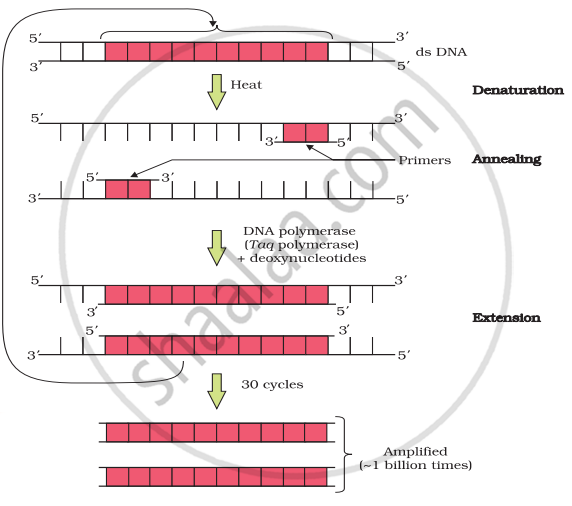Advertisements
Advertisements
Question
Besides better aeration and mixing properties, what other advantages do stirred tank bioreactors have over shake flasks?
Solution
Shake flasks are used in the laboratory to cultivate and mix materials on a small scale. Microbes, plant, and animal cells, as well as their enzymes, use bioreactors to convert basic materials into specialised products. Bioreactors are used to produce biomass or cell products on a large scale in an aseptic environment. Here, huge volumes of culture (100-1000 litres) can be treated. A bioreactor provides the optimal conditions for producing the desired product (temperature, pH, substrate, salts, vitamins, and oxygen). The most commonly used bioreactors are of stirring type. A bioreactor is a better option than shake flasks. It has an agitator system to mix the contents correctly, an oxygen delivery system to ensure oxygen availability, a foam control system, a temperature control system, a pH control system, and a sampling port to withdraw small volumes of the culture regularly.
APPEARS IN
RELATED QUESTIONS
Draw a labelled sketch of sparged-stirred-tank bioreactor. Write its application.
Can you list 10 recombinant proteins which are used in medical practice? Find out where they are used as therapeutics (use the internet).
From what you have learnt, can you tell whether enzymes are bigger or DNA is bigger in molecular size? How did you know?
Describe briefly the following:
Bioreactors
Describe briefly the following:
Downstream processing
Explain briefly:
PCR
State the importance of using a bioreactor.
Answer the following question:
Describe the process of amplification of the "gene of interest" using the PCR technique.
Which of the following term used for defining a viral genome incorporated into host DNA?
Blood stains are found at the site of a murder. It DNA profiling technique is to be used for identifying the criminals, which of the following is ideal for use?
The first step in recombinant DNA technology is
In PCR, primers are used for ______.
Rising of dough is due to ______.
Significance of 'heat shock' method in bacterial transformation is to facilitate ______.
While doing a PCR, ‘denaturation’ step is missed. What will be its effect on the process?
Identify and explain steps ‘A’, ‘B’ and ‘C’ in the PCR diagram given below.

Read the paragraph given below and answer and questions that follow:
| Enzyme Taq polymerase, is extracted from a eubacterial microorganism Thermus aquaticus from Yellowstone National Park in Montana, USA and isolated by Chien et al. (1976). Taq polymerase successfully replaced the DNA polymerase from E.coli that was being used in PCR earlier and this shift revolutionised the PCR technique. |
- Taq polymerase after its discovery replaced E.coli DNA polymerase in PCR technique. Explain giving reasons why was the need felt for the change?
- What is a primer and its importance in PCR?
- Write the importance of PCR as a diagnostic tool.
State the advantage of using Thermostable DNA polymerase.
Bioreactors are the containment vehicles of any biotechnology-based production process. For large scale production and for economic reasons the final success of biotechnological process depends on the efficiency of the bioreactor.
Answer the following questions w.r.t. the given paragraph:
- List the operational guidelines that must be adhered to so as to achieve optimisation of the bioreactor system. Enlist any four.
- Mention the phase of the growth we refer to in the statement "Optimisation of growth and metabolic activity of the cells".
- Is the biological product formed in the bioreactor suitable for the intended use immediate? Give reason in support of your answer.
